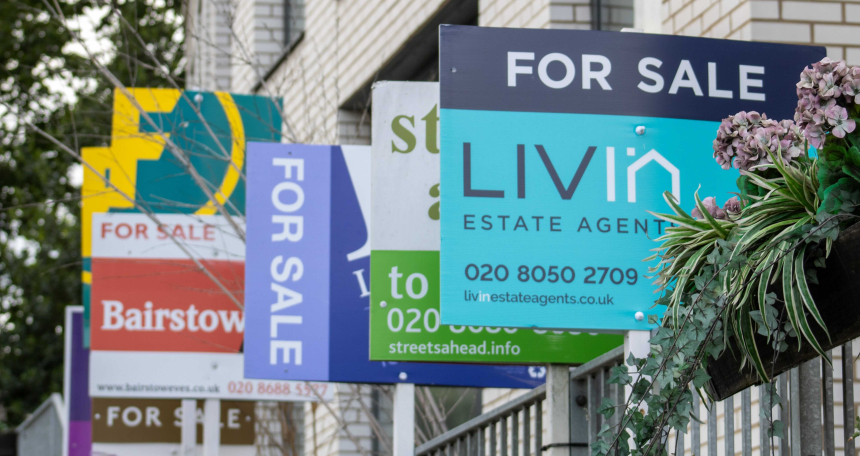
PriceHubble unveils a comprehensive study on housing affordability in the United Kingdom, focusing on the comparison between mortgage payments and rental costs in the past few years.
The aim of the study is to determine in which cities buying or renting a property is more financially attractive. For that purpose, median monthly rents relative to gross household earnings were analysed and then similarly, monthly mortgage costs for a median-priced home in each city.
Overall shift from mortgage payment to rents in the UK’s largest cities
PriceHubble's study unveils a notable trend in the UK's housing market, particularly evident in its largest cities: despite a period of high rental growth, there has been a distinct shift from mortgage payments to rents in terms of affordability.
In 2021, the average monthly mortgage payment accounted for 21% of gross earnings across the UK's ten largest cities. However, by the end of 2023, this figure had risen to 26% due to interest rate increases. In contrast, rental affordability changed more modestly from 22% to
24% of gross earnings over the same period. This shift can explain heightened buyer reluctance and a decline in sales transactions over the past 12-18 months.
“It might surprise some that rents are the more affordable option, as rental growth has been high over the last few years and tight rental market conditions have hit headlines regularly. But despite some deterioration in rental affordability, strong earnings growth has helped keep rental affordability ratios more in check, creating a nuanced picture of the housing market”, says Sandra Jones, Managing Director of PriceHubble UK.
Widening “mortgage vs. rents” gap in London and the UK’s most expensive cities
Oxford, Cambridge and Brighton are the three cities in which mortgage payments accounted for the highest share of gross earnings in 2023, respectively 44% in Oxford and 43% in Cambridge and Brighton. In these cities, the gap between mortgage costs and rents has widened significantly over the past few years. These affordability levels are now well beyond the generally acknowledged 30% affordability benchmark. For instance, in London, the mortgage cost rose to 41% of earnings by the end of 2023 from 34% in 2021. Oxford, Cambridge, and Brighton witnessed a similar dramatic increase in mortgage affordability ratios, indicating significant challenges for potential buyers in these areas. The impact of interest rate increases has been much more significant for these expensive markets.
Buying remains more affordable in Manchester and Newcastle
Despite the current overall trend of renting being more affordable than mortgage payments, exceptions exist. In cities like Manchester and Newcastle, buying a home remains more financially viable than renting. In these cities, monthly mortgage payments were cheaper than renting in 2021 and continued to be so in 2023 albeit the gap has narrowed.
In Manchester, for instance, the affordability ratio for mortgage payments stood at 23% in 2023, compared to 25% for rental payments. Similarly, in Newcastle the affordability ratio for mortgage payments was 18%, compared to 19% for rental payments.
These affordability metrics help us understand the patterns of demand for first-time buyers, either renting for longer or stepping onto the housing ladder. There are other affordability hurdles to consider, of which saving for a deposit is the most critical. The typical first-time buyer is putting down a deposit of usually 20% in most areas of the UK.
Sandra Jones highlights the importance of understanding the nuances and exceptions on the market and adds: "Overall, the picture changed quickly from the end of 2022 when interest rates in the UK started rising significantly. Now it is changing again with interest rates expected to have peaked. Looking at the year ahead, a likely path in some markets would be either an equalising cost of rents versus mortgage or a reversal with mortgage becoming the relatively cheaper option again”.
The full report can found found here.
